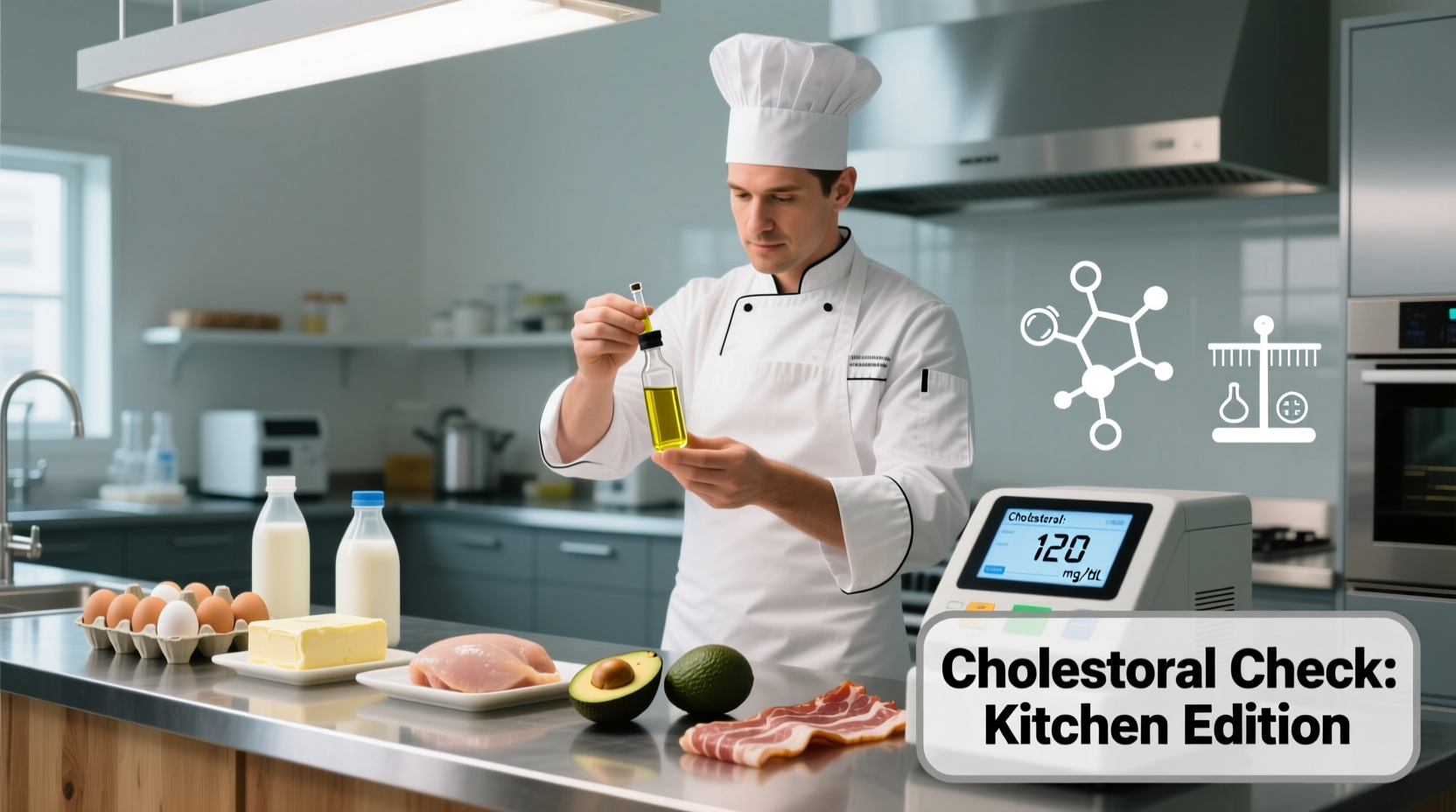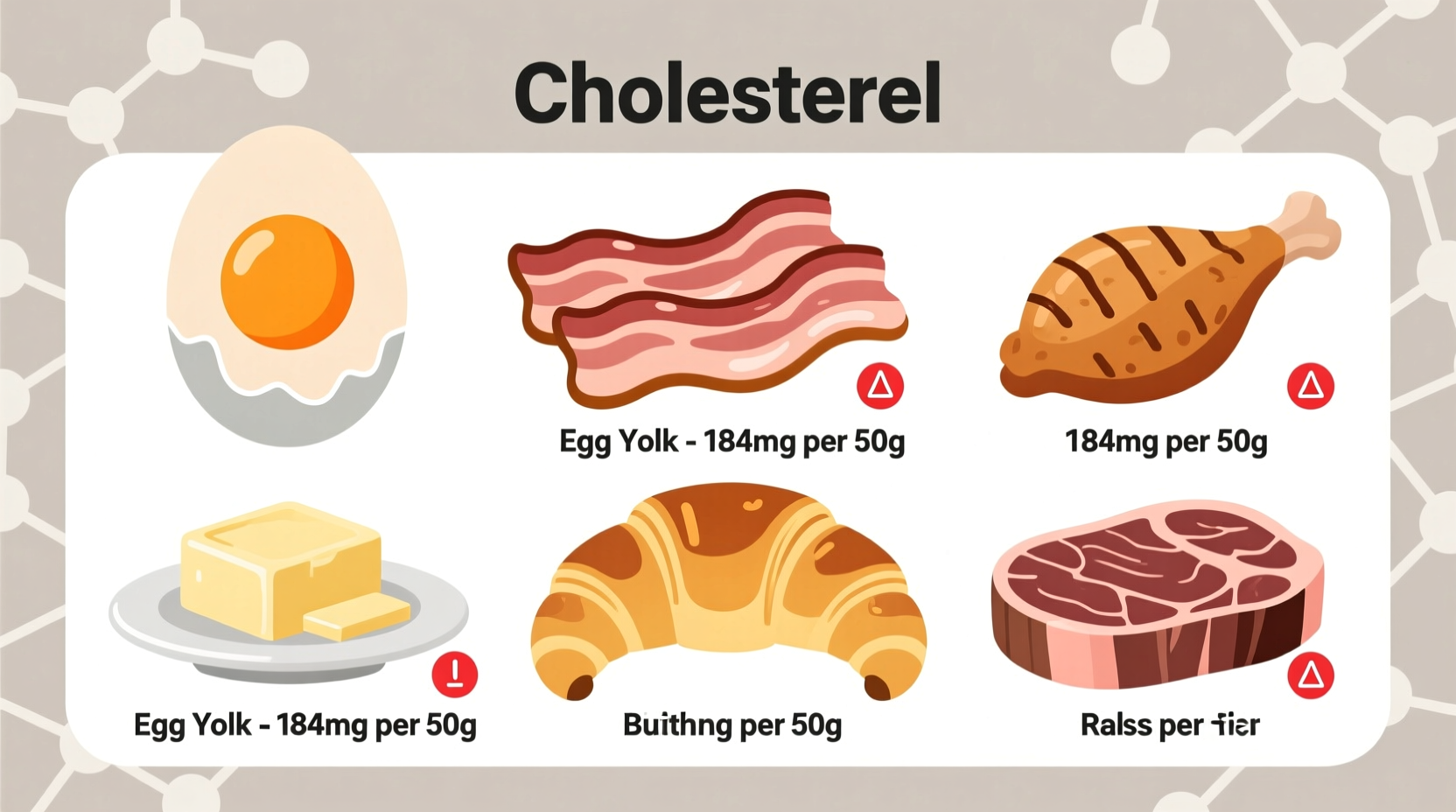Animal-based foods contain the highest dietary cholesterol. Egg yolks (186mg per large egg), organ meats like liver (331mg per 3oz), and shellfish including shrimp (166mg per 3oz) top the list. Current nutrition science shows saturated fats impact blood cholesterol more significantly than dietary cholesterol itself.
Understanding which foods contain high cholesterol helps make informed dietary choices, especially if you're managing heart health. While dietary cholesterol matters, research increasingly shows saturated and trans fats have a stronger impact on blood cholesterol levels. This guide details specific high-cholesterol foods with verified nutrient data, explains their health context, and provides practical substitution strategies.
Top High-Cholesterol Foods: Verified Nutrient Data
Based on USDA FoodData Central measurements, these animal-derived foods contain the highest cholesterol per standard serving. Note that current Dietary Guidelines for Americans emphasize overall dietary patterns over isolated nutrient counting.
| Food (Serving Size) | Cholesterol (mg) | % Daily Value* |
|---|---|---|
| Egg Yolk (1 large) | 186 | 62% |
| Liver (3oz beef) | 331 | 110% |
| Shrimp (3oz) | 166 | 55% |
| Butter (1 tbsp) | 31 | 10% |
| Whole Milk (1 cup) | 33 | 11% |
*Percent Daily Value based on 300mg limit. Source: USDA FoodData Central (2023)

Why Dietary Cholesterol Matters Less Than You Think
For decades, dietary cholesterol was strictly limited. However, the American Heart Association's 2020 scientific advisory clarifies that saturated fats have a far greater impact on blood cholesterol levels than dietary cholesterol. Their research shows most people's bodies compensate for dietary cholesterol by reducing internal production.
Individual responses vary significantly. About 25% of the population are "hyper-responders" whose blood cholesterol rises more noticeably with dietary intake. If you have familial hypercholesterolemia or diabetes, consult your healthcare provider about personalized limits.
Practical Dietary Strategies for Heart Health
Instead of focusing solely on cholesterol-containing foods, prioritize these evidence-based approaches:
- Replace saturated fats: Choose olive oil instead of butter, lean poultry over fatty meats
- Embrace soluble fiber: Oats, beans, and apples help remove cholesterol
- Smart egg consumption: Use two egg whites plus one yolk for baking or scrambles
- Shellfish preparation matters: Grill shrimp instead of frying in butter
The Mediterranean diet pattern—which includes moderate fish and egg consumption while emphasizing plants—consistently shows cardiovascular benefits in studies like those published by the National Institutes of Health.
Common Misconceptions Clarified
Many confuse dietary cholesterol with blood cholesterol. Plant-based foods like coconut oil contain zero cholesterol despite being high in saturated fat. Conversely, shellfish are high in cholesterol but low in saturated fat. The American Heart Association emphasizes that for most people, dietary cholesterol has minimal impact on heart disease risk when consumed as part of balanced eating patterns.
When to Consult a Professional
If you have existing heart conditions, familial hypercholesterolemia, or diabetes, work with a registered dietitian. They can help interpret how specific high-cholesterol foods fit into your personalized nutrition plan based on your metabolic response. Regular blood tests provide more valuable insights than generic food restriction lists.











 浙公网安备
33010002000092号
浙公网安备
33010002000092号 浙B2-20120091-4
浙B2-20120091-4